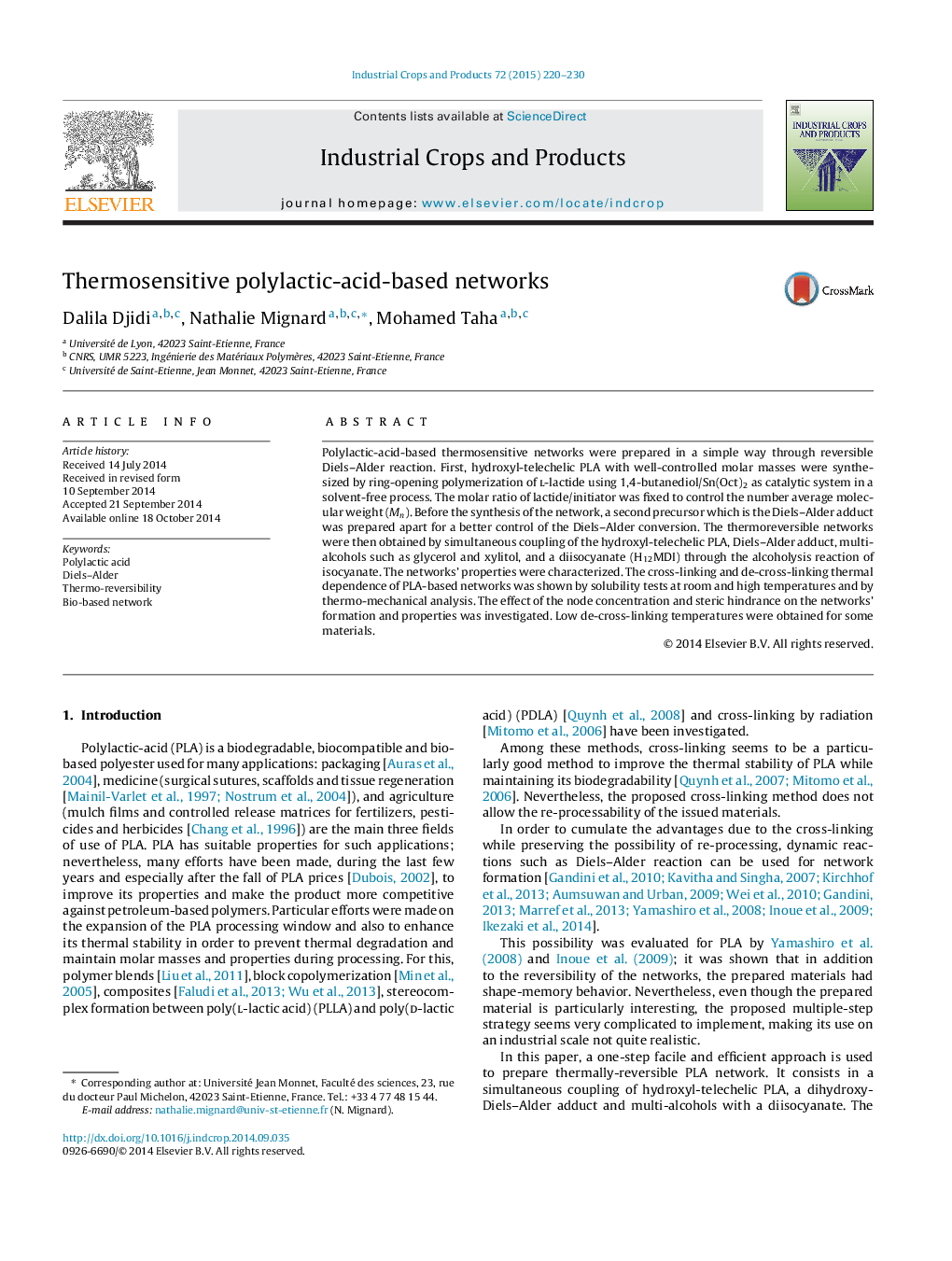| Article ID | Journal | Published Year | Pages | File Type |
|---|---|---|---|---|
| 4512792 | Industrial Crops and Products | 2015 | 11 Pages |
•PLA-based networks were effectively obtained by Diels–Alder reaction.•Network formation and its reversibility were verified by dynamic mechanical analyses.•The thermal-reversibility was proved on several cycles.•The effect of the node density on the reversibility temperatures was evaluated.•Reversibility temperature approaching the human body one was reached.
Polylactic-acid-based thermosensitive networks were prepared in a simple way through reversible Diels–Alder reaction. First, hydroxyl-telechelic PLA with well-controlled molar masses were synthesized by ring-opening polymerization of l-lactide using 1,4-butanediol/Sn(Oct)2 as catalytic system in a solvent-free process. The molar ratio of lactide/initiator was fixed to control the number average molecular weight (Mn). Before the synthesis of the network, a second precursor which is the Diels–Alder adduct was prepared apart for a better control of the Diels–Alder conversion. The thermoreversible networks were then obtained by simultaneous coupling of the hydroxyl-telechelic PLA, Diels–Alder adduct, multi-alcohols such as glycerol and xylitol, and a diisocyanate (H12MDI) through the alcoholysis reaction of isocyanate. The networks’ properties were characterized. The cross-linking and de-cross-linking thermal dependence of PLA-based networks was shown by solubility tests at room and high temperatures and by thermo-mechanical analysis. The effect of the node concentration and steric hindrance on the networks’ formation and properties was investigated. Low de-cross-linking temperatures were obtained for some materials.
Graphical abstractFigure optionsDownload full-size imageDownload as PowerPoint slide
